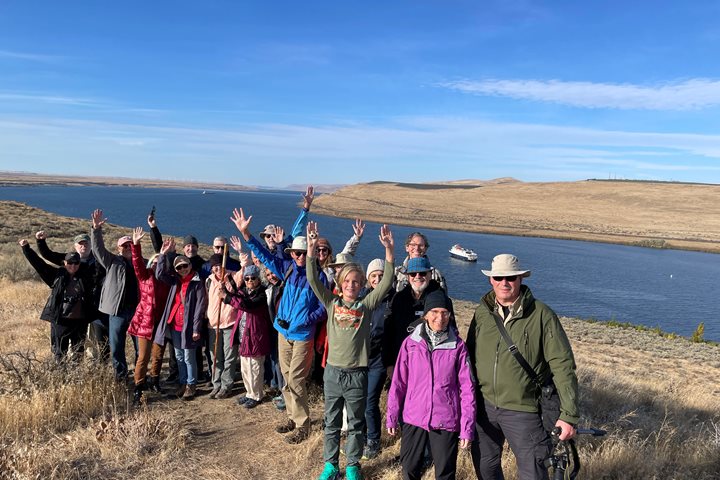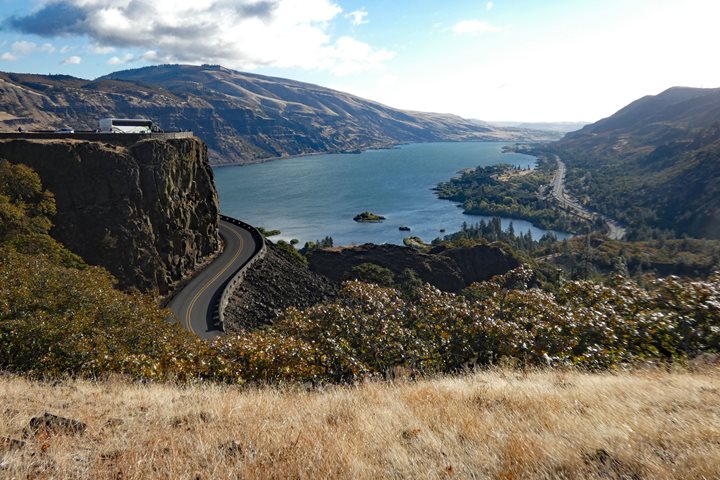Today’s river exploration had a touch of excitement that came in the form of winds that brought with them sufficiently choppy waters. It was several hours before these conditions abated. This led to the cancellation of one landing, a hiking opportunity at Crow Butte. It could be said that unscripted developments such as these are part and parcel of the expedition experience. Guests nevertheless enjoyed this seafaring surprise as well as the accommodations made on board.
The Columbia River’s McNary, the last of the upstream dams on the Big River, was described by staff from several vantage points. The fish ladder came into view when the boat topped the wall at 75 feet. As National Geographic Quest moved out from the lock, guests joined staff in the lounge for a series of announcements and brief presentations.
Birds were identified; geological features pointed out and described; scientific and historical books pertaining to the ship’s route were taken out from the ship library for display.
The surrounding country is the land of several ancient tribes: Cayuse, Umatilla, Walla Walla, Nez Perce, and Palus. The Palus are related to the Nez Perce and were guardians of the area around the Palouse River. Walla Walla (“many waters”) had been helpful to the Corps of Discovery when it passed through Wallula Gap at the mouth of the Walla Walla River in 1805 and 1806. The Nez Perces used the Great Trail through the Walla Walla Valley to reach buffalo country to the east and salmon fishing sites to the west.
The Cayuse and Nez Perce became expert in the cultivation of Spanish horses beginning in the mid-1700s. The Umatilla people (“many rocks”) developed hunting and salmon near today’s Pendleton, Oregon. This region today is known for winter and spring wheat, sugar beets, potatoes, asparagus, and the famous Walla Walla sweet onion.
The majesty and mystery of Wallula Gap also became part of the afternoon discussion. This narrow break in the hills was created several thousand years ago by ice flows and a large lake, which broke through with great force and violence. This tumult swept down the Columbia River to the river’s mouth. High hills on the western side are known as Horse Heaven Hills. The eastern rides open up to the rich Walla Walla Valley.
It was also noted that this confluence of rivers creates a sort of “42nd and Broadway,” i.e. the Columbia, Snake, Walla Walla, and Yakima rivers.
After dinner the Historian presented “Thomas Jefferson: The First ‘Western’ President.”









